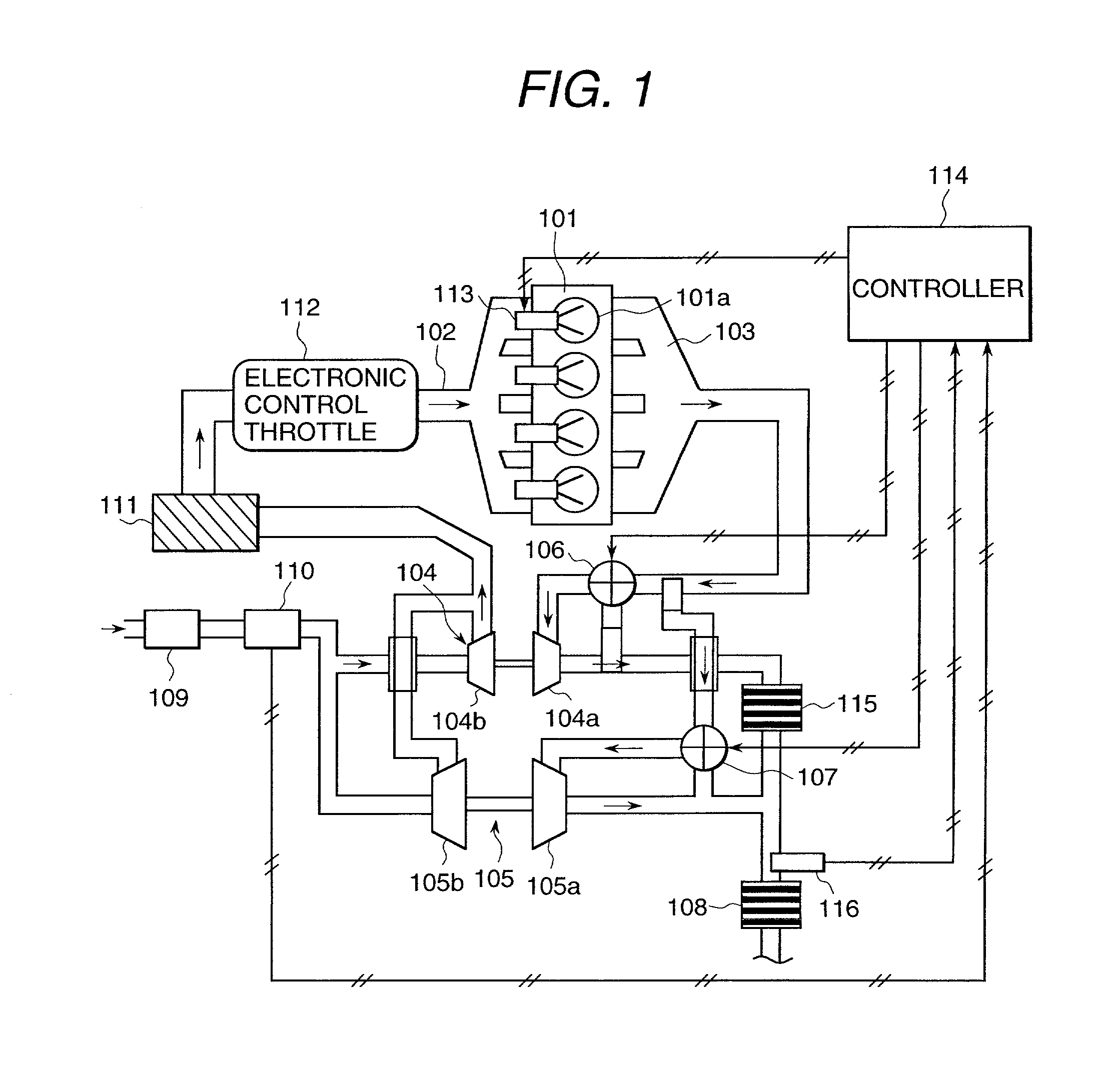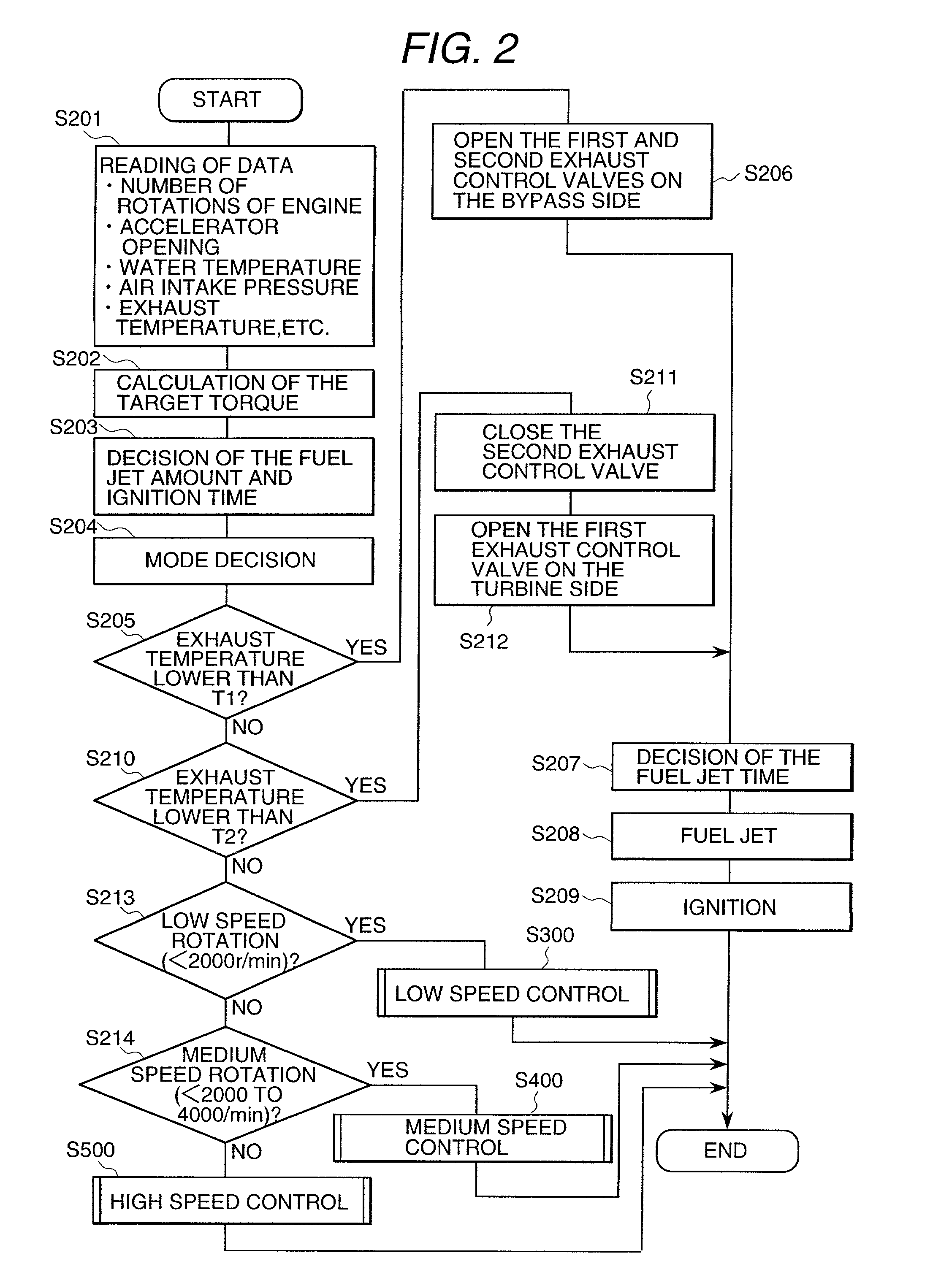Engine supercharging system
a supercharging system and engine technology, applied in the direction of machines/engines, electrical control, separation processes, etc., can solve the problems of small supercharging function, inability to achieve output improvement effect at the time of high load at high speed, and inverse reduction of outpu
- Summary
- Abstract
- Description
- Claims
- Application Information
AI Technical Summary
Benefits of technology
Problems solved by technology
Method used
Image
Examples
Embodiment Construction
[0048] The embodiments of the present invention will be explained hereunder with reference to the accompanying drawings.
[0049] The first embodiment of the present invention will be explained by referring to FIGS. 1 to 14.
[0050] FIG. 1 is a system block diagram showing the whole rough constitution of the engine supercharging system of this embodiment. In FIG. 1, a fuel jet valve 113 is attached to an engine 101 so as to directly jet fuel to a cylinder 101a of the engine 101.
[0051] In the engine 101, in the air intake process, the air intake valve (not shown in the drawing) opens and the piston (not shown in the drawing) moves down and inhales air. In this case, when homogeneous combustion is to be carried out, fuel is jetted at this timing and mixing of fuel and air in the cylinder is sufficiently expedited via the nest compression process, so that the air use rate is high and high torque can be generated. Then, in the compression process, the air intake valve is closed, and the pist...
PUM
 Login to View More
Login to View More Abstract
Description
Claims
Application Information
 Login to View More
Login to View More - R&D
- Intellectual Property
- Life Sciences
- Materials
- Tech Scout
- Unparalleled Data Quality
- Higher Quality Content
- 60% Fewer Hallucinations
Browse by: Latest US Patents, China's latest patents, Technical Efficacy Thesaurus, Application Domain, Technology Topic, Popular Technical Reports.
© 2025 PatSnap. All rights reserved.Legal|Privacy policy|Modern Slavery Act Transparency Statement|Sitemap|About US| Contact US: help@patsnap.com



